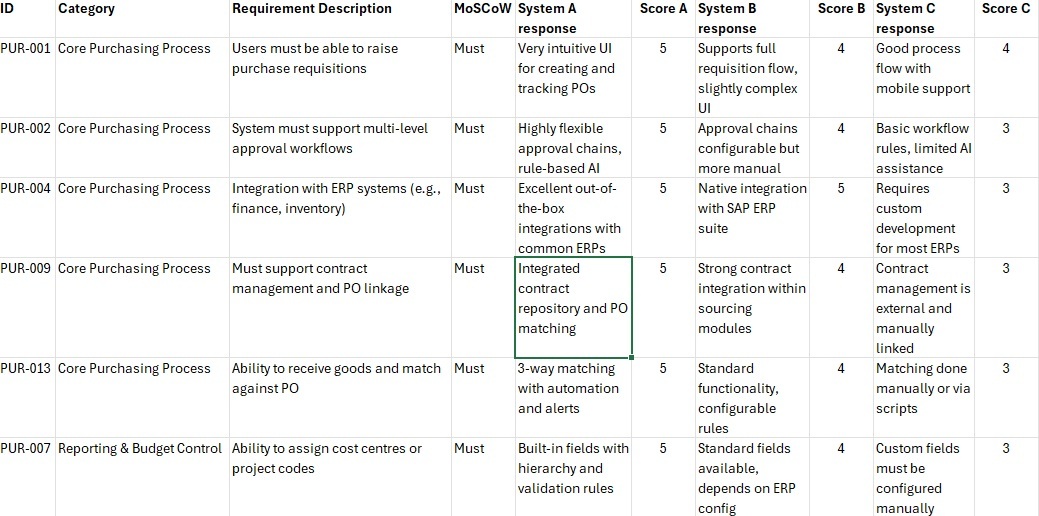Requirements Elicitation & Analysis
The cornerstone of effective business analysis, where insights from stakeholders are transformed into precise, actionable specifications. This phase ensures that the real needs of the organisation are understood and thoroughly documented before any design or implementation begins.

1. Preparation & Context Setting
Business analysts begin by reviewing existing artefacts—business cases, project scopes, regulatory guidelines, system documentation—to ground their understanding of the problem space. They then identify relevant stakeholders, including system users, business owners, subject-matter experts, decision-makers, IT support, and any regulatory representatives. An elicitation plan is drafted to define objectives, choose elicitation techniques, schedule sessions, and prepare supporting materials.
2. Stakeholder Engagement
Analysts engage stakeholders through a tailored mix of techniques:
- Structured Interviews allow deep insights from individuals or small groups, guided by prepared questions and prompts.
- Workshops or Focus Groups such as JAD (Joint Application Design) enable collective exploration, debate, and consensus gathering in facilitated sessions.
- Observation or Shadowing involves watching users as they perform real tasks to uncover tacit knowledge not expressed explicitly.
- Surveys or Questionnaires can capture broad feedback from many users, useful for early-stage requirement discovery.
- Prototyping & Walkthroughs, including wireframes or use-case diagrams, help stakeholders visualise potential solutions and trigger valuable responses.
3. Documenting & Modelling Requirements
Information is then captured in formal models and documentation. Common artefacts include:
- Use Cases or User Stories for functional behaviour,
- Structured diagrams (e.g., BPMN, data models),
- Acceptance Criteria and Functional Specs,
- Non-Functional Requirements specifying performance, security, usability, and compliance needs.
Analysts ensure consistency by using templates, visual modelling, and traceability to connect each requirement to its origin and rationale.
4. Validation & Confirmation
Draft requirements are reviewed iteratively with stakeholders to confirm accuracy and completeness. Analysts organise review sessions or distribute documents for feedback, capturing refinements or new discoveries. This iterative validation helps prevent misunderstandings and scope creep.
5. Prioritisation & Trade-offs
Not all requirements can be implemented simultaneously. Analysts use techniques such as MoSCoW, ranking models, or cost-benefit analysis to prioritise requirements, ensuring effort is focused on the most valuable functionality first. They facilitate transparent decision-making aligned with strategy and resources.
6. Integration & Traceability
Each requirement is traced back to strategic goals and forward to design, development, and testing. This traceability ensures that nothing is lost and that tests and designs reflect the stated needs. Where agile methods are used, approaches such as Specification by Example and acceptance test-driven development (ATDD) enable living documentation that bridges requirements and testing.
7. Ongoing Requirements Management
Requirements evolve. Business analysts maintain a change log, manage version control, assess impact, and re-validate changes with stakeholders. They use requirements tools or repositories when complexity or regulation demands, ensuring clarity and governance.
Why It Matters
- Ensures solution design genuinely addresses core business needs while reducing risk of rework or wasted investment.
- Promotes stakeholder alignment, mutual understanding, and trust through active engagement.
- Enables disciplined documentation and traceability, essential for complex, regulated, or multi-vendor projects.
- Supports agile delivery by translating business needs into test-driven artefacts, ensuring each increment delivers real value.
At Bright Lambs, we champion a rigorous and human-centred approach to Requirements Elicitation & Analysis. We ensure solutions are built right from the start—not just in code, but in clarity and mutual understanding.

